[Editor’s Note: IMG MGMT is a series of image-based essays by artists. This week’s authors are Faith Holland and Seth Watter.
Faith Holland is an artist and curator whose practice focuses on gender and sexuality’s relationship to the Internet.
Seth Watter is a doctoral candidate in Modern Culture & Media at Brown University, and a co-organizer of Magic Lantern Cinema, an experimental film and video series based in Providence, RI. His article “Close-ups and Curlicues: Female Neurosis in Two Films by Anatole Litvak” is forthcoming in Camera Obscura.
Faith and Seth will be collaborating again on the catalog for her first solo show, Technophilia, at Transfer Gallery in June.]
I.
In Captivity (dir. Roland Joffe, US, 2007), a young fashion model named Jennifer Tree (Elisha Cuthbert) is whisked away by an unknown killer to a Dark and Terrible Place, where she is constantly monitored and routinely tortured. Initially conceived as a straightforward thriller, the then-recent success of the Hostel franchise compelled After Dark Films to re-conceive Captivity in line with the emerging generic conventions of “torture porn.” The low-grade feature they produced is mainly remembered for its unbelievably tasteless advertising campaign: four pictures of a bound and gagged Cuthbert with the captions ABDUCTION — CONFINEMENT — TORTURE — TERMINATION brutally superimposed upon them. One imagines more than a few awkward exchanges on the way home, driving past a billboard or taxi top ad for Captivity. Before the campaign was wisely abandoned in the ensuing PR nightmare, these enormously enlarged images of a woman’s debasement must have been a reliable if unpleasant conversation starter.
For a film so patently “prettified,” however, such gestures at realness are not very convincing. There is not a single frame of Captivity that has not been digitally altered in some way, if only to adjust its lighting and color balance. So the film shifts its guilt onto a surrogate figure, a woman who is abducted, confined, tortured, and nearly terminated, the better to exorcise those cosmetic demons.[i] Any actual violence that ensues is presented to the viewer as a punishment for, and a continuation of, the daily existence of a fashion icon. She guzzles blood, is buried in sand, kills a pet dog, and made to witness the violent deaths of others. In the end she escapes, and gives as good as she gets. It is all very uninspired and routine, even by exploitation standards.
II.
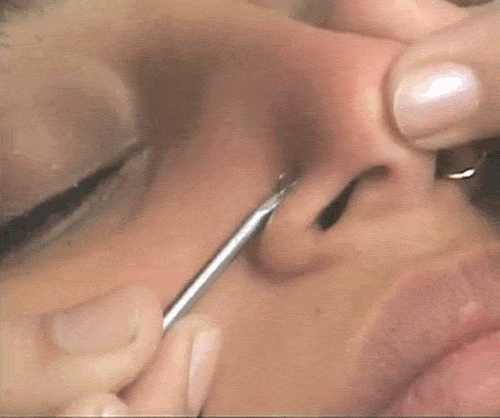 On the one hand, in the ubiquitous Saw franchise (2004-10), Wolf Creek (2005), Hostel (2005), Hostel II (2007), Turistas (2006), Borderland (2007), The Human Centipede: First Sequence (2010) and Second Sequence (2011), and other sterling productions, young men and women are sadistically tortured at the hands of their captors. In keeping with their glossy production values, each film offers a sophisticated array of pain-inflicting devices: scalpels, hammers, forceps, retractors, needles, staplers, and scissors, which are deployed in gratuitous and rote fashion. Unlike the firearms of the male action movie, the key to horror is still tactility. Nothing is scarier than the laying on of hands in darkness. Distance is further abolished by penetrating the victim with serrated steel.
On the one hand, in the ubiquitous Saw franchise (2004-10), Wolf Creek (2005), Hostel (2005), Hostel II (2007), Turistas (2006), Borderland (2007), The Human Centipede: First Sequence (2010) and Second Sequence (2011), and other sterling productions, young men and women are sadistically tortured at the hands of their captors. In keeping with their glossy production values, each film offers a sophisticated array of pain-inflicting devices: scalpels, hammers, forceps, retractors, needles, staplers, and scissors, which are deployed in gratuitous and rote fashion. Unlike the firearms of the male action movie, the key to horror is still tactility. Nothing is scarier than the laying on of hands in darkness. Distance is further abolished by penetrating the victim with serrated steel.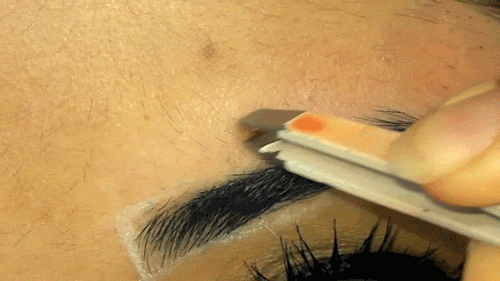
Like horror films, cosmetic tutorials do not hide their violence. They foreground it openly in the form of tweezers, eyelash curlers, hookhead blackhead removers, eyebrow thread, eyebrow razors, makeup spatulas, or the bizarre metal coil known as a Bellabe, apparently used to eliminate unwanted facial hair. Unlike horror films, they offer no narrative and no moral; only instructions to be followed immediately after, or in tandem with, the moment of their viewing. The home video market and, more recently, YouTube, have produced a vast and valuable archive of female discomfort in the form of tutorials. Their content ranges from the simple to the complex, and from the funky to the barbaric.
In Professional Makeup Techniques for Asian Women (2009), for example, a “professional Hollywood makeup artist” demonstrates “techniques and tips for applying makeup on women of Asian heritage.” (The production company, appropriately named Aesthetic VideoSource, has also released installments for Caucasian and black women.) For 75 numbing minutes, the instructor covers everything from the creation of a “perfect eyebrow” to the hiding of scars and blemishes. Its description boasts: “With these techniques, you too will be able to bring beauty alive with the touch of your brush.”[ii] A “touch” of the brush it is most certainly not. Watching these videos, one is left with the impression that annoyance and discomfort are the inevitable byproducts of being an adult female. The toxic mixtures used for beautification in antiquity have been sublimated today into the cold press of metal on flesh: a peculiarly aesthetic masochism performed daily with ritualistic patience and fervor.
By isolating various moments of the cosmetic process and repeating them indefinitely, we reveal what might be taken for granted in all its hidden, microscopic violence. The pores, which mediate between inside and outside, are dammed up and prevented from functioning properly; hairs are ruthlessly yanked out should they fail to contribute to a calligraphic line; the eye, so soft and vulnerable, is simultaneously the locus of the most advanced techniques. Images that would ordinarily repel the viewer must be staunchly faced if such craft knowledge is to be understood, absorbed, and reproduced. The obvious question is, “Why”?
Baudelaire, man of modernity and poet of prostitutes, once wrote: “anyone can see that the use of rice-powder, so stupidly anathematized by our Arcadian philosophers, is successfully designed to rid the complexion of those blemishes that Nature has outrageously strewn there, and thus to create an abstract unity in the color and texture of the skin, a unity, which, like that produced by the tights of a dancer, immediately approximates the human being to the statue, that is to something superior and divine.”[iii] Baudelaire, of course, wrote from the perspective of a man who did not much tend to his personal appearance. As spectator, judge, and frequent buyer, he could contemplate the unity without suffering the yoke of production. But what displays itself on a woman’s face “with frankness and honesty” is, like any commodity, only the end point of a painstaking process requiring considerable technique. The irregular surface of the human countenance is transformed through the cosmetic equivalent of gesso, which makes the skin texture more even and gives the final design its longevity. Once the initial negation is complete, the epidermis becomes a workable canvas on which further applications of pigment can bind. The process is repeated the following day, and the day after that.
III.
Torture has been an institutionalized practice in American intelligence agencies since 1963. It is the laying bare of a secret, and it itself must remain secret. Torture is designed to reduce the enemy to nothing, to break the will along with the body; it is a forced depersonalization that cuts the victim off from any known realm of human involvement.[iv] Torture is so shameful that, when it does appear in public, it cannot even do so under its own name, and so assumes euphemistic guises like “enhanced interrogation” or “justice.”
Paradoxically, however, torture tends toward display. If we review once again the photographic dossier from Abu Ghraib, it becomes clear that this form of organized brutality was so emphatically meant to be seen. As the images of cruelty spread their way through magazines, newscasts, and the digital recesses from which they emerged, what seemed most scandalous was less the fact of torture itself than its bizarre theatricality. Standing in the background, with an idiotic smile, an interrogator exhibits “human pyramids” as fine works of sculpture; another, more stoic, sits atop a naked detainee in the style of heroic portraiture; and in the image of a hooded man with splayed arms, electrodes attached to the extremities of body and genitals, one finds the Christ figure so deeply ingrained in Western painting.[v] There is something eerie about these pictures that goes well beyond their manifest content. By posing and displaying, plying and arranging, the interrogator has made something he or she can be proud of. By some obscure process, hitherto unknown to us, torture produced art.
 The application of cosmetics is a defensive maneuver. Unlike the soldier, the wearer does not seek information, not even nominally. Most women know that the first layer of makeup is commonly called concealer; the point is not to reveal, but to hide the natural complexion and to violently remove everything that cannot be hidden. Yet she forces herself, as Baudelaire said, to yield up “something superior and divine.” The daubing, the tweezing, and the scraping of the skin all take place in private, and what emerges from the ordeal is a work of art, something that “approximates the human being to the statue.” The photograph of the prisoner, the new unity of the face, the digital image: they replace truth with a higher truth, nature with second nature, the physical with the metaphysical. They are more perfect, and hence, more beautiful.
The application of cosmetics is a defensive maneuver. Unlike the soldier, the wearer does not seek information, not even nominally. Most women know that the first layer of makeup is commonly called concealer; the point is not to reveal, but to hide the natural complexion and to violently remove everything that cannot be hidden. Yet she forces herself, as Baudelaire said, to yield up “something superior and divine.” The daubing, the tweezing, and the scraping of the skin all take place in private, and what emerges from the ordeal is a work of art, something that “approximates the human being to the statue.” The photograph of the prisoner, the new unity of the face, the digital image: they replace truth with a higher truth, nature with second nature, the physical with the metaphysical. They are more perfect, and hence, more beautiful.
[i] See Rosalind Galt, Pretty: Film and the Decorative Image.
[ii] http://www.videoshelf.com/video/dvd/U34D_Professional_Makeup_Techniques_for_Asian_Women.html.
[iii] Charles Baudelaire, “The Painter of Modern Life,” The Painter of Modern Life and Other Essays (London: Phaidon, 1995), 33-4.
[iv] “The confusion technique is designed not only to obliterate the familiar but to replace it with the weird.” Central Intelligence Agency, KUBARK Counterintelligence Interrogation (July 1963), quoted in Alfred W. McCoy, A Question of Torture: CIA Interrogation, From the Cold War to the War on Terror (New York: Henry Holt & Co., 2006), 51.
[v] Cf. Stephen F. Eisenman, The Abu Ghraib Effect (London: Reaktion, 2007).

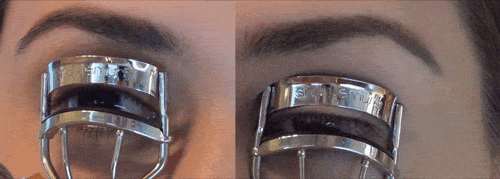
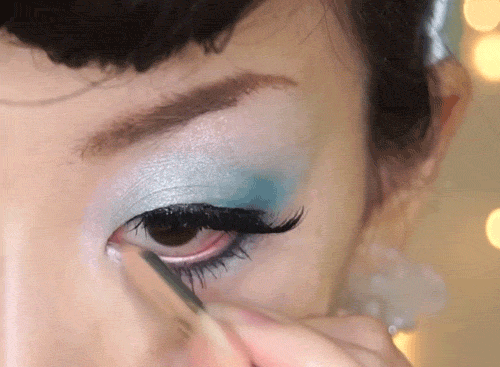


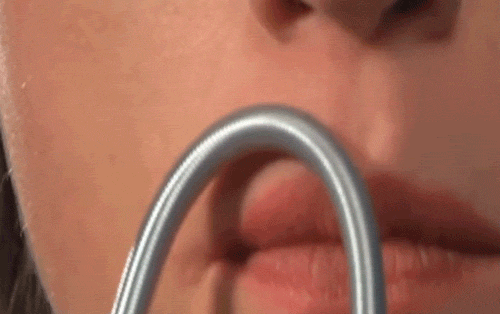
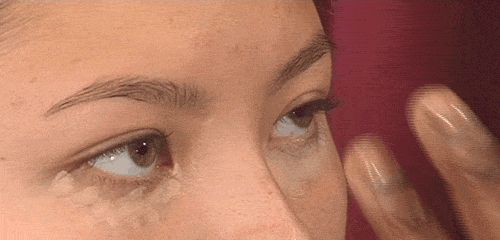
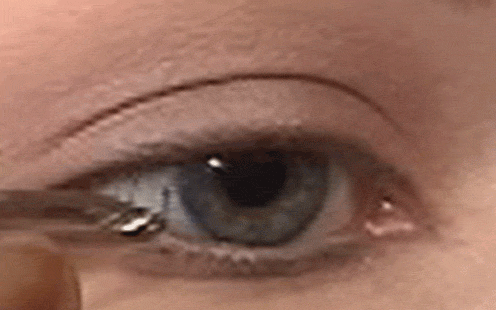

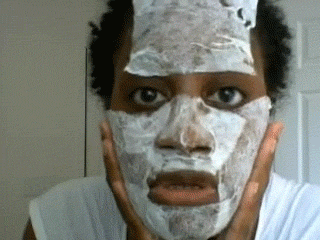
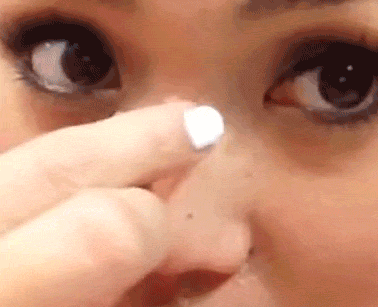
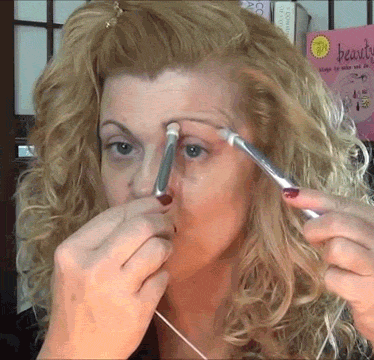
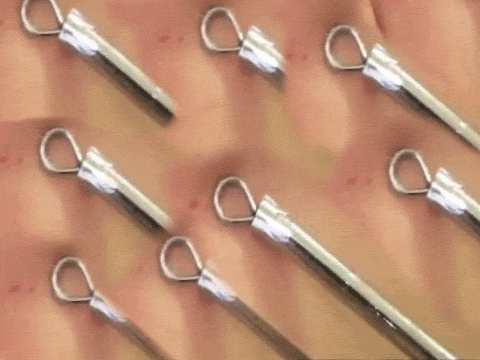

{ 8 comments }
The gifs speak more profound than the essay which attempts to frame it but merely serves to create a distraction. Faith has some good ideas but they are often lost in execution, like her uploading videos on porn sites for some subversive purpose that came off really flat and most likely ignored en mass by the fapping public.
I can’t agree with your appraisal of Faith’s porn project. Compare her strategy with Dan Graham or Stephen Kaltenbach’s magazine ads in the 60s: all sites chosen for the display of art of any kind are coded to some extent to the effect that you kind of have to have your eyes open to recognize it. I mean, it’s not un-common even for people in a place as unambiguous as a museum to storm out saying “that’s not art!”
It doesn’t lessen the project that perhaps the most common viewers came (yuk yuk) to the site with the express intention of finding the videos rather than accidentally coming (har har) onto them, but I also think you’re not giving enough credit to the fappers. I very often stop while I’m using various sites (..and not just porn ‘neither) when something weird appears on them. Whether or not the thing actually has the intentionality of “Art” isn’t that interesting to me, personally, and the urge to find unexpected cognitive dissonance, re-orient your thinking about the world by being confused for a second seems pretty redemptive.
for instance: http://newyork.craigslist.org/mnh/cas/4866060029.html
plus, I don’t know, man… I think just a wall of strobing gifs would be pretty basic and text wouldn’t get past tl;dr… seems like a nice hybrid in the context of this series
Yeah, these gifs are a level much better than her previous work. she is working with found images and the content of those images and the richness of the images themselves with the selection of looping adds a lot but I disagree that the text offers much but an attempt to frame which sadly merely achieves to create a terrible distraction. The frame is like trying to reach out for more support of what it tries to contain, and it comes off feeling like what a 1st year art skool student would do to make their work more meaningful by reaching out, which in turn really really just show the inadequacies in doing so. For me it reads as pastiche of film theory, cultural studies, a reading list from a syllabus from a first year course without any attempt at critical inspection. I think this is the fundamental weakness in practices like Holland that attempts to work with found images on the internet in utilizing these images for composition and selection. The images still retain connection to its networks.
At the end of the day what is said between us matters little. She put these images in the same networks where she culled them from, and if these images can withstand the test of time and still retain connection to the frame she presented here then she has done something as an artist. But If these images are found by others, taken up and not in ways that retain connection to the frame, then the frame mattered little.
I should clarify that the text was not written by Faith, but by myself. That it did not meet with approval is, of course, another matter.
I would also disagree strongly with the theory of artistic appropriation offered in these comments. The images alone are not the artwork, with extra discourse piled on for purposes of credibility or validation. The images and the text, taken together, are the work. This is what is known as a “photo-essay.” That these images can exist elsewhere, with other text, is of no concern to us.
I want to clarify that I found the synthesis of gif+text appropriate to the context of this series; one or the other would not have been what this is and I appreciate it as such
If beauty as a social construction isn’t natural, is it always supposed to hurt?
I’d love to imagine a beauty without pain. What a wonderful idea.
Comments on this entry are closed.